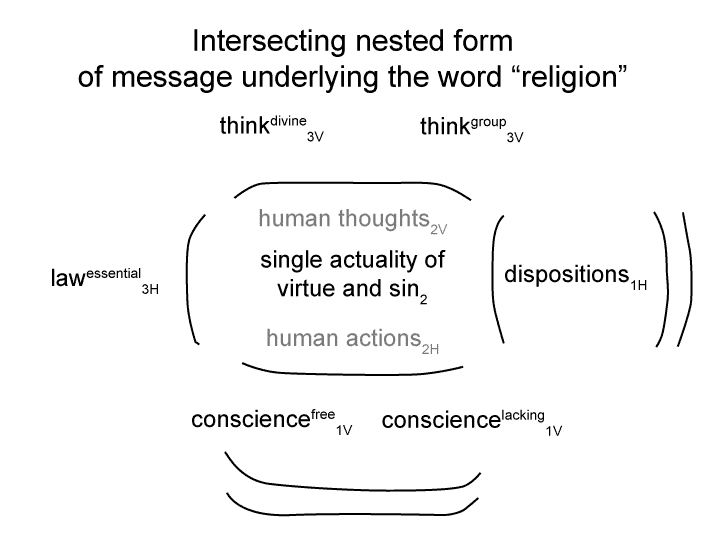Man and Sin by Piet Schoonenberg (1964) 2.1AC
[“God Recognizing Himself3” brings “the spontaneous order and the creature2” into relation to “the potential inherent in the creature1“.
If a creature realizes itself by self-destruction, the realization of its potential is situated in the spontaneous order.
Both “the self-destruction of the creature and the adaptation in the spontaneous order2” are contextualized by God3.
This simple thought experiment shows the value of the nested formulation.
When a modern presents a rhetorical question, ‘he’ anticipates one answer instead of three.
Does the creature cease to exist?
The answer is No3( Maybe2 and Yes2( Who knows what potentially remains?1)).]

